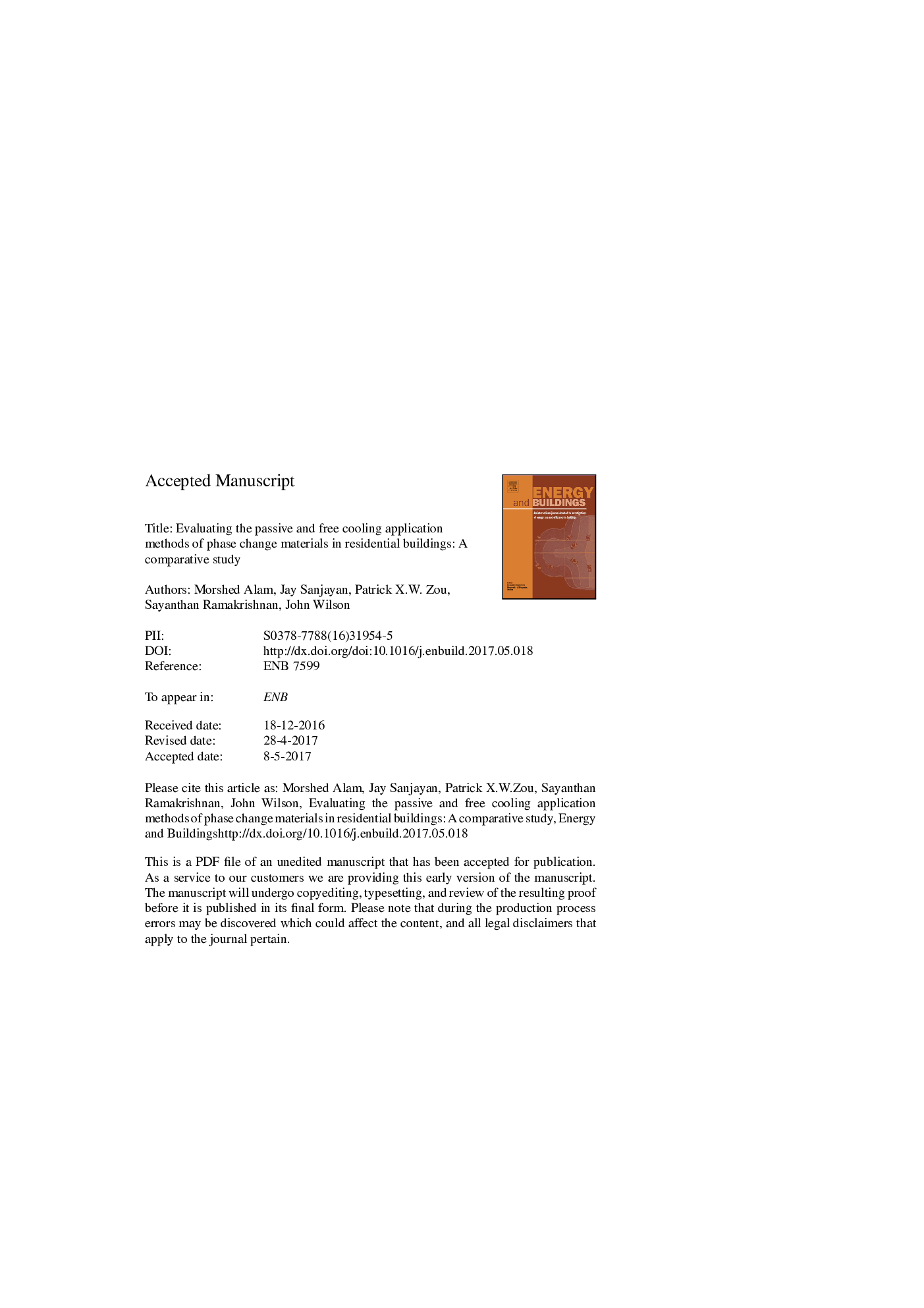| کد مقاله | کد نشریه | سال انتشار | مقاله انگلیسی | نسخه تمام متن |
|---|---|---|---|---|
| 4919038 | 1428942 | 2017 | 43 صفحه PDF | دانلود رایگان |
عنوان انگلیسی مقاله ISI
Evaluating the passive and free cooling application methods of phase change materials in residential buildings: A comparative study
ترجمه فارسی عنوان
ارزیابی روش های کاربردی خنک کننده خنثی و خنک کننده مواد تغییر فاز در ساختمان های مسکونی: یک مطالعه مقایسه ای
دانلود مقاله + سفارش ترجمه
دانلود مقاله ISI انگلیسی
رایگان برای ایرانیان
کلمات کلیدی
مواد تغییر فاز، خنک کننده منفعل، مبدل حرارتی، خنک کننده رایگان شبیه سازی حرارتی ساختمان، دینامیک سیالات محاسباتی،
موضوعات مرتبط
مهندسی و علوم پایه
مهندسی انرژی
انرژی های تجدید پذیر، توسعه پایدار و محیط زیست
چکیده انگلیسی
The integration of Phase Change Materials (PCMs) in buildings as a potential method to improve indoor thermal comfort can be achieved via three different approaches: passive, active and free cooling. Previous studies on the thermal performance enhancement using these methods revealed that all three methods can improve the energy efficiency or indoor thermal comfort of a building significantly. However, there is no study available in the literature comparing the effectiveness of different PCM application methods. Such comparative analysis is important to understand which application method would be best for increasing the energy efficiency and thermal comfort of a particular building type. The aim of the present study is to compare and analyze the effectiveness of passive and free cooling application methods of PCM in a residential building in Melbourne, Australia. The passive application method utilizes a macro-encapsulated PCM, so-called BioPCM mats, installed in the ceilings of the building. In free cooling, outdoor air was supplied to the indoor after passing it through a PCM containing heat exchanger. The comparative study was carried out using validated numerical models for both application methods. The simulation models were developed using building simulation software EnergyPlus V8.3 and computational fluid dynamics (CFD) software ANSYS V15.1. The results showed that, for the studied building, free cooling application of PCM is more effective than the passive application in reducing the indoor zone temperature. During the studied period of seven days, passive application of 25 °C PCM resulted in up to 0.44 °C reduction in peak indoor zone temperature compared to 2.63 °C reduction in the free cooling application which is about six times of the reduction in passive case. Despite the use of several supporting strategies to improve the performance of passive PCM application, its effectiveness in reducing the peak zone temperature was always found to be lower than the free cooling method. Parametric studies showed that the optimum PCM temperature should be carefully chosen based on the application method as free cooling and passive cooling methods are influenced by outdoor air temperature and indoor zone temperature respectively.
ناشر
Database: Elsevier - ScienceDirect (ساینس دایرکت)
Journal: Energy and Buildings - Volume 148, 1 August 2017, Pages 238-256
Journal: Energy and Buildings - Volume 148, 1 August 2017, Pages 238-256
نویسندگان
Morshed Alam, Jay Sanjayan, Patrick X.W. Zou, Sayanthan Ramakrishnan, John Wilson,
